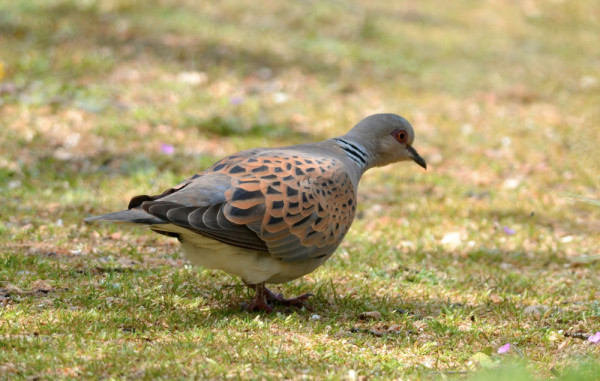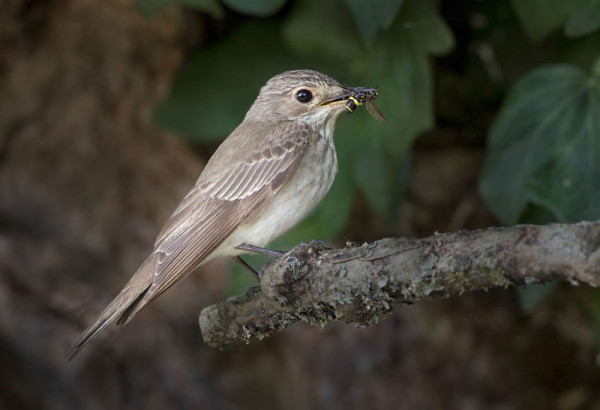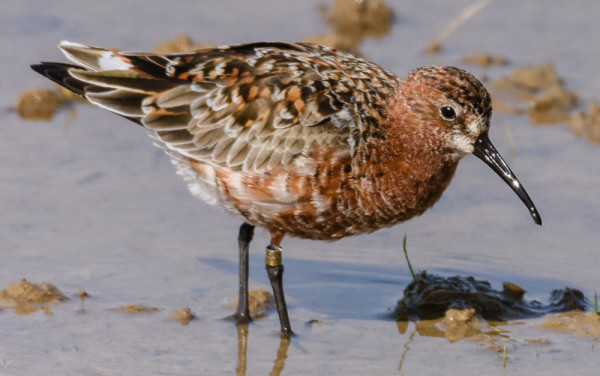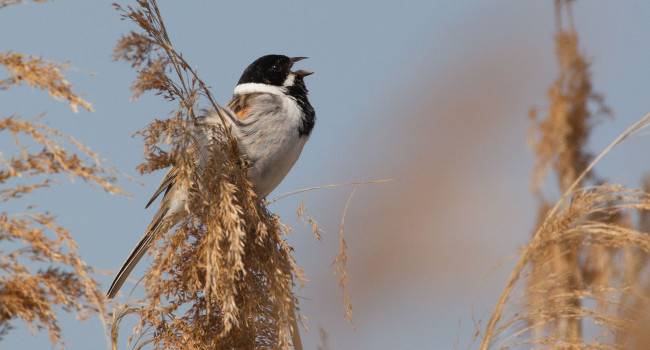
BirdTrack migration blog (12–18 May)
Scott’s role includes the day-to-day running of BirdTrack: updating the application, assisting county recorders by checking records and corresponding with observers.
Relates to projects
A switch in the wind direction and a rise in temperatures didn’t exactly see the floodgates opening, but did provide the conditions needed for many of our later arriving migrants to arrive in good numbers.
Reports of Swift, Whitethroat, Cuckoo, and Reed Warbler all increased compared to previous weeks, and for many the first arriving screaming parties of Swifts were a welcome sight and sound. Indeed, this year Swifts have arrived about a week earlier than last year.
The Whitethroat’s bold song and parachuting display flight means this species is easier to spot at the beginning of the breeding season; it was reported on almost 40% of the lists submitted to BirdTrack last week.
Of particular note were Whitethroats, with their preference for scrubby areas, which were found singing from atop bushes up and down the country. Coupled with their parachuting song flight, this bold behaviour ensured they made it on to almost 40% of the lists submitted to BirdTrack in the last week.
This week will probably see the peak in reports of Whitethroat – over the next few weeks, they will be harder to spot as pairs settle down to nest and raise their young, although their scolding churring call will still let you know they are there.
Reports of Cuckoo across England remain slightly behind the historical trend, but in both Wales and Scotland the reports were higher than expected. This is a reflection of the northward change in the Cuckoo’s UK distribution, which is mirrored in several other species including Willow Warbler.

Other passerines that were reported in the last week included Garden Warbler, Redstart, and Lesser Whitethroat. Worryingly, reports of both Spotted Flycatcher and Turtle Dove remain low compared to this time last year.
Swallow and House Martin have been notable for their absence in some areas, but the last week has seen an increase in reports. Whilst they’re not being reported as frequently as their historical averages, reports are more numerous than this time last year. Let us hope they have a productive breeding season.
Many waders head to their breeding grounds across Greenland, Iceland, Fennoscandia, and arctic Russia during May. The past week saw the continued passage of Whimbrel, Grey Plover, Ruff, Sanderling, and Wood Sandpiper heading north through Britain and Ireland. Many of these species will be acquiring their breeding plumage, and male Ruffs in particular can look very smart, sporting an impressive variety of coloured longer feathers around their necks that give them their name.
The stand-out rarity was undoubtedly a Song Sparrow, which spent a day on Bardsey Island.
A few rarer species were found during the week, with a Song Sparrow that spent the day on Bardsey Island being the stand-out species – this bird should have been on the other side of the Atlantic!
Other rarities included a Western (or possibly Eastern) Black-eared Wheater in Wexford, a Dark-eyed Junco in Aberdeenshire, and a Short-toed Treecreeper in Kent.
Looking ahead
The forecast for the coming weekend and the following few days looks to follow a seemingly established pattern for this spring, one of showers and of easterly and northerly winds.

At the moment, Saturday looks to be dry, with a light easterly wind feeding in from the Baltic Sea. This could see a few migrants such as Whinchat, Redstart, Tree Pipit, and Spotted Flycatcher arriving along the east coast. These will be birds that are heading to Fennoscandia to breed, rather than ‘our’ birds that will have already arrived. Conditions like this can also see some scarcer species turning up, such as Red-backed Shrike, Wryneck, Ortolan Bunting, Honey-buzzard, White-winged Black Tern and red-spotted Bluethroat.
As we progress into next week, high pressure begins to settle the weather down – but that does mean colder north-to-north-easterly winds are pulled in, and these will persist for much of the week. Although temperatures will drop, it’s unlikely they will fall low enough or for long enough to cause any issues for breeding birds, or for birds using Britain and Ireland as a stop-off along their migration route.
The wind direction may not be conducive to producing a deluge of migrants, but the wind speed looks as if it will remain light, and this should result in a continued steady arrival of late-spring migrants. Typically this will include Spotted Flycatcher, Nightjar, Cuckoo, and Swift, all of which tend to arrive towards the end of May.

Although wader numbers are falling away as birds depart for their breeding grounds and head north, it is still worth looking out for a few species at this time of year.
You could find a dainty Little Stint or Curlew Sandpiper in their brick-red breeding plumage amongst flocks of Dunlin; reedy pools could still play host to a Wood Sandpiper or Ruff; estuaries should be visited by groups of Ringed Plover, Grey Plover, Black-tailed Godwit, and Turnstone all feeding up to fuel their onward journey.
If finding a rarity is more your thing, then species to look out for include Terek Sandpiper, Gull-billed Tern, Moltoni’s Warbler, Thrush Nightingale, and Red-footed Falcon.
Which spring migrants are you still waiting to see? Let us know in the comments below!
Send us your records with BirdTrack
Submitting your sightings to BirdTrack is quick and easy, and gives us up-to-date information about our migrating birds.
Every record, from Blackbird to Black-tailed Godwit, is valuable.
Find out more








Share this page